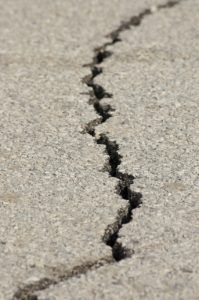Earthquake Safety Tips for Pets
October 17th, 2019
Spread the word about animal disaster preparedness by downloading and sharing our free PDFs.
 We encourage pet owners in earthquake-prone areas to:
We encourage pet owners in earthquake-prone areas to:
- Identify all pets with an ID tag and microchip. This is the single best way to make sure you are reunited with your pets if you are separated. Be sure the collar is secure, the tag is legible and your contact information is current. Include a secondary contact on the tag in case you lose telephone service. Keep the microchip registration up-to-date and include at least one emergency number of a friend or relative who lives out of your immediate area. Microchipping is essential since collars often come loose during powerful storms.
- Create an emergency kit for each pet.
- If you are home – gather your pets and stay inside. Seek shelter under a sturdy table away from windows and glass doors. Your pets will most likely find their own place to hide in the house and that is okay; wait until the shaking is over to find them and approach them carefully.
- If you and your pet are outdoors – go to an open area away from trees, buildings, walls and power lines and drop to the ground until the shaking passes.
- If driving with your pet – be sure to pull over to the side of the road and stop. Avoid parking near overpasses and power lines. Do not exit your car until the shaking is over.
- Create a plan for when you are not home – have a trusted neighbor (who is familiar with your pets) take them and meet you at a designated location. Make sure to give them a key to your home and show them likely hiding places where they may find your pets, as well as where their emergency kit is kept.
Find more disaster tips at RedRover.org/disastertips
“For both human and animal safety, people should never their pets behind when disaster strikes,” says RedRover president and CEO Nicole Forsyth. “Animals left to fend for themselves during earthquakes or other catastrophes suffer terribly, and evacuees can compound their own stress by worrying about the pets they left at home.”



